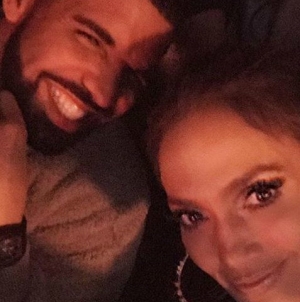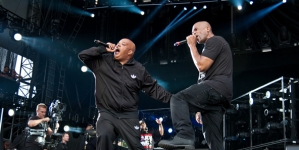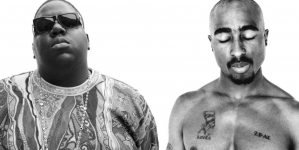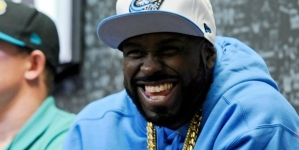-
Coming Straight From Austin Texas With New Single “Pretend” - January 9, 2021
-
Travis Scott Releases His First Single of 2019 [VIDEO] - October 4, 2019
-
Lil Kim Releasing First Album In 14 Years - October 4, 2019
-
Three Charged With Providing Mac Miller With Deadly Drugs - October 4, 2019
-
Lizzo Makes History With New Billboard Record - September 24, 2019
-
Rap-A-Lot Record’s J Prince Has A Lot To Say About 6ix9ine - September 24, 2019
-
Philly Approves Meek Mill Weekend - March 14, 2019
-
T.I.’s Sister, Precious Harris Had Died - February 22, 2019
-
Jussie Smollett Remove From Empire’s Final Episodes - February 22, 2019
-
Drake & Jennifer Lopez Have Been Spending Quite Some Time Together - December 21, 2016
Hip-Hop’s Most Important Moments In The Last 40 Years
We’ve officially wrapped up a big year for the genre we all love– new albums from Jay Z, Kanye West, Pusha T, Mac Miller, Drake, Juicy J (and the list goes on), only made 2013 that much sweeter. Mix in a new-found competition brought on by, you guessed it, “Control,” and all the free mixtapes we’ve received in 2013, and this past year was definitely a good one. Apart from the usual rap antics, 2013 was significant as it marked 40 years since hip-hop’s inception, starting out in the Bronx borough of New York City and spreading across the world. Now that we entered a new year, we’ve decided to take a look back at some of the biggest moments throughout the last four decades of hip-hop.
We’ve officially wrapped up a big year for the genre we all love– new albums from Jay Z, Kanye West, Pusha T, Mac Miller, Drake, Juicy J (and the list goes on), only made 2013 that much sweeter. Mix in a new-found competition brought on by, you guessed it, “Control,” and all the free mixtapes we’ve received in 2013, and this past year was definitely a good one.
Apart from the usual rap antics, 2013 was significant as it marked 40 years since hip-hop’s inception, starting out in the Bronx borough of New York City and spreading across the world. Now that we entered a new year, we’ve decided to take a look back at some of the biggest moments throughout the last four decades of hip-hop.
In celebration of the genre’s prevailing legacy, we’re looking at each of the four elements of hip-hop culture: rapping, DJing, graffiti, and breaking.
• Afrika Bambaataa Forms The Universal Zulu Nation [1970-80s]
Shortly after Kool Herc began throwing the legendary block parties that would birth hip-hop culture, Kevin Donovan, better know as Afrika Bambaataa, was returning from a pilgrimage of sorts in Africa.
The trip was transformative, and Bambaataa, a prominent figure in New York’s gang culture, returned determined to change the trend of death and vice in his community. He co-opted his own gang and several others into the Universal Zulu Nation, a massive collective of street kids and (now ex) gangbangers. Zulu would go on to streamline the idea of hip-hop’s five elements and become the largest crew around.
Though largely lost on most hip-hop heads in the U.S., Zulu’s legacy is a unified community with an aversion to physical violence. The angst and conflict of gang brawls and shootings was channeled into the creative elements of hip-hop.
Bambaataa himself would go on to enjoy a several years of commercial success as one of the first emcees to utilizes the newest element at the time, rap.
Together with Kool Herc, Bambaataa and the Zulu movement are the progenitors of everything we love about hip-hop today.
• DJ Kool Herc’s First Block Party [1973]
The day that Clive Campbell decided to throw his sister a block party in the Bronx he impacted the world in more ways then he could have imagined. It was the first of many block parties around 1520 Sedgwick avenue that would see the birth of the largest international cultural movement in history. It was the birth of hip-hop. Here was the first time young men and women (of all color, by the way) took to the floor in what would become breaking. Campbell, commonly known as DJ Kool Herc, would invent a method of playing records where the drum break is continually looped. This method evolved into what we now know as hip-hop DJing.
August 13, 1973 will forever be the day that united millions around the world and birthed the careers of hundreds of millionaires.
• Scratching Is Invented [1975]
Though DJ Kool Herc’s invention of the breakbeat was the foundation upon which the entire hip-hop movement was established upon, it wasn’t until Grand Wizard Theodore that turntablism began to coalesce into the discipline we know it as today.
It’s said that Theodore stumbled upon the technique while attempting to pause a record so he could turn to listen to his mother, who had been upset with all the noise he was making and was entering his bedroom. The scratching sound mesmerized the young DJ and he would go on to present the new technique to Grandmaster Flash, who brought the sound to the masses.
The invention of scratching reinvigorated DJing. The scratching technique, along with breakbeat isolation and mixing, forms the basis of turntablism, even today.
• Crazy Legs Inherits Rocksteady Crew [1977]
In 1977 Richard “Crazy Legs” Colón inherited what would become the most popular b-boy crew in the world, Rocksteady.
Under Leg’s leadership, the crew would grow, and after a historic performance outside New York’s Lincoln Center, would bring b-boying national attention, while simultaneously reinvigorating New York’s b-boy scene.
• Sugar Hill Gang Drops “Rapper’s Delight” [1979]
There are few, if any, rap records more popular than Sugar Hill Gang’s “Rapper’s Delight.”
”Rapper’s Delight” was the one hit that took rap out of New York and around the world. Prior to the song’s 1979 release, only a handful of music featuring the rap style were making rounds on the airwaves.
Despite the song’s success, it had somewhat dubious beginnings. First off, in the eyes of the early hip-hop community the Sugar Hill Gang was lacking in credibility, they were a group quickly put together by Sylvia Robinson, the owner of Sugar Hill Records, and not part of any respected crews that were dancing or rapping at the time. Big Bank Hank, one of three Sugar Hill emcees, was a former music manager, and would go on to gain instant fame off the success of “Rapper’s Delight,” but he did so without ever crediting Casanova Fly, of the Cold Crush Brothers, from who he took his lyrics for the second verse of the song.
Hank literally spells out Casanova Fly’s name in the verse. Thus, “Rapper’s Delight” is also one of the most insidious examples of biting in hip-hop.
• Fab Five Freddie Collabs With Blondie [1981]
Though not as immediately popular as Run-DMC and Aerosmith’s crossover hit “Rock This Way,” Blondie’s “Rapture” was a pivotal moment in hip-hop and a benchmark record for rap.
Born from a collaborative effort from Blondie and Fab Five Freddy, the song marks the first time a record featuring rap would top charts.
Debbie Harry’s references to names like Freddy and Grandmaster Flash – along with this new, unorthodox method of performing music – helped to bring rap out of New York and into the mainstream, for better or worse.
• The Emergence Of Gangsta Rap [1980s]
Inspired in large part by the work of Ice T, the West Coast gangsta rap movement changed the landscape of rap music forever. By the time N.W.A. debuted “Straight Outta Compton” rap would never be the same.
The controversy and popularity surrounding the music coming from the West during this period would prove strong enough to solidify rap’s position as the dominant mainstream expression of hip-hop as a whole, forever pushing breaking, graffiti and even DJing toward the fringes. This single effect may be counted as one of the worst things to happen to the genre. However, the momentum of the West and gangsta rap was largely responsible for rap’s first lyrical renaissance.
Highlighting and sometimes glamorizing the ugliest parts of urban life, the West’s ascension took the lyrical content of “The Message” to a whole other level.
By the mid-’90s gangsta rap was the primary form of rap. It’s only in recent years that rap has moved past the gangsta rap sound.
• Rocksteady Crew Opens “Flashdance” [1983]
The opening scene from 1983’s “Flashdance” is largely responsible for the spread of breaking – and all associated stereotypes – around the country,and eventually the world.
Dancing to the Jimmy Castor Bunch’s “Just Begun,” Rocksteady Crew famously performed breaking and locking on a cardboard box in front of a small crowded walkway. It was a transformative moment for hip-hop. Overnight breaking, locking and popping spread around the nation – with popping and locking catching particularly strong on the West Coast.
As with most major hip-hop moments, the exposure was a catch-22. While breaking and the other forms of dance displayed would go on to spread and grow into what they are today, so too did the false notion that all dance styles performed in the clip where “breakdance.” That term itself, breakdance, spread as well and incorrectly labeled and categorized one of hip-hop’s first elements to this day.
• “Wildstyle” Opens As First Hip-Hop Film [1983]
Before “Style Wars” or “Beat Street” there was “Wildstyle,” the first ever hip-hop film.
Released in hip-hop’s 10th year, “WildStyle” captured a great moment in the culture. Hip-hop had yet to truly break into the mainstream on any level, so the film was among the first (and few) major media projects that featured all aspects of the culture in their rawest form.
It also featured many now-legendary figures in hip-hop, including Fab Five Freddy and Grandmaster Flash.
• Rick Rubin And Russell Simmons Launch Def Jam Records [1984]
Rap music probably wouldn’t be where it is today had Rick Rubin and Russell Simmons not teamed up to launch hip-hop’s parallel to Motown.
The label is responsible in no small part to the careers of profound rap acts like LL Cool J, Beastie Boys, Public Enemy, and in more recent times, Kanye West, Jhené Aiko and 2 Chainz.
As one of the first record labels to push and support hip-hop music, Def Jam’s pedigree speaks through its catalogue of artists. It helped carve out a profitable lane for rap and rappers, and greatly contributed to the current status quo in commercial rap.
• Run-DMC Collabs With Aerosmith [1986]
Similar to Blondie’s “Rapture” from five years earlier, Run-DMC’s “Walk this Way” is one of the most impactful rap songs in existence and helped stabilize rap as method of performance though its crossover appeal.
The song was a cover of Aerosmith’s 70’s hit of the same name, and thrust Run-DMC into the mainstream. It also spawned a new genre entirely in the form of rap-rock, not to mention gave Aerosmith itself new life.
• The Fresh Prince Of Bel Air [1990]
Though labeled for years as a “bubblegum rapper” the Fresh Prince, aka Will Smith, was among the first hip-hop acts to gracefully cross over into the acting sphere.
“The Fresh Prince Of Bel Air” presented rap music to America in a way that was digestible, but also authentic, without many of the increasingly negative stereotypes of the time.
The success of the show also proved that rap counts as a “triple threat” talent. Smith often showed skills in dance during the show, as well as his rap ability, but the true strength of the program rested in Smith’s surprising ability to act. Scenes like the one where Will’s father leaves (again) simultaneous display remarkable acting talent on Will’s part, and the perspective of many fatherless children in the America.
• The International Battle of the Year Series Begins [1990]
Parents and authorities around the country spent several years cracking down on the dance and the breaking community was basically forced underground, where it has largely remained in the U.S.
While hip-hop was losing one of the foundational elements state-side, breaking was about to reinvent itself in Germany come the ’90s. The premiere international breaking event Battle of the Year (BOTY) would launch in 1990.
Since then, the competition has gained popularity and helped to shift the paradigm from more cypher-oriented jam sessions at b-boy events to high-paying battle competitions. The event also helped establish strong b-boy communities around the rest of the world. BOTY even inspired a movie this past year of the same name, starring Chris Brown and several of the most talented b-boys in the U.S.
Regardless of the quality of the film, it highlights a sad fact for American hip-hop– we haven’t won a BOTY since 1998, despite housing some of the best b-boys in the world.
• The Internet [1991-present day]
It seems obvious to say it, but the internet has forever changed hip-hop.
Like the rest of the music industry, rap sales are at an all-time low. Unlike the rest of the music industry, rappers have turned to mixtapes, EPs and platforms like Twitter and HNHH to release their free music.
The onslaught of new, free music led to the end of the regional wars in rap and has helped carve niche audiences for the various types of rap music that are out there. The success of many rappers like Macklemore and Drake (pre-deal) have highlighted the fading relevance of big record companies and their contracts.
The internet hasn’t had as drastic an effect on graffiti, as it’s always been the most underground of the elements for legal reasons. However, DJing and breaking are hugely affected by the information age, though not quite to the extent that rap is.
The prevalence of breaking around the world is impossible to deny these days. Old heads and newcomers alike are picking up or following the dance to a degree unseen since the fallout from “Flashdance.” However, biting has grown past simple moves and into riffs of entire sets thanks to the popularity of YouTube.
DJs face a similar issue with the increased difficulty in curating exclusive records. Digging is easier than ever, but so is stealing mixing techniques. The rise of the MP3 has rendered vinyl-totting DJs a near novelty.
As with much of the most impactful moments in hip-hop’s 40 years, the internet is equal parts a blessing and depressing. Maybe 60/40.
• The Murders Of Tupac and The Notorious B.I.G. [1996-1997]
The slayings of Tupac and the Notorious B.I.G. are two of contemporary rap’s defining moments. The culture with an affinity for battling reached its peak with these two killings, as the competitive nature of hip-hop transformed into an all-out beef within mainstream rap. The consequences were deadly. Regardless of each artist’s personal feelings towards one another in the end, the public largely perceived their deaths as outcomes of rap’s most popular feud.
These are two of the saddest moments in rap and hip-hop– period. The lesson in Pac and Big’s deaths seems to have stuck though, as such a tragedy has yet to repeat itself in the mainstream.
• Jay Z and Nas Battle [2000s]
Though not as tragic as the Pac and Big affair, Jay Z and Nas’ famous beef engrossed a generation of rap fans for nearly 10 years, even though only two diss tracks made the mainstream rounds.
“Ether,” and to a smaller degree “Takeover,” helped redefine the art of the diss track. The subjective quality of each track is still hotly debated in barbershops, classrooms and internet forums around the country to this day.
• Nas Claims Hip-Hop is Dead [2006]
In 2006 Nas released his eighth studio album, along with one of the most controversial statements in hip-hop’s history.
Hip-Hop Is Dead, as both an album and a single, incensed much of the rap community, particularly the southern scene. As the regional wars were still ongoing, Nas’ statements further ostracized the south, a region that was experiencing nearly unchallenged proliferation in the media and on the airwaves. Through crunk, snap and the emerging trap sounds, the south was transforming the way rappers approached song-writing. Lyrics had largely fallen to the wayside in favor of loud, low-frequency production and simplified hooks.
It was a difficult time for rap, but Nas’ statement addressed hip-hop as a whole. Many breakers, graffiti writers and DJs took offence to the statement, as it undermined the progress of the other elements.
Though subjective, Nas’ admonishment of hip-hop, and rap in particular, ignited a conversation that continues today. And with the recent resurgence of lyricism, maybe that admonishment was exactly what rap needed, though the album had little lasting effect on the other factions of the culture.
• Kanye West Drops “808’s & Heartbreaks” [2008]
With the (new) exception of Yeezus, Kanye West’s fourth studio album 808’s & Heartbreaks was one of the most challenging hip-hop records in rap’s history. Released during a period were auto-tuned vocals ruled the charts, 808’s still stands as a hallmark of execution with the tool.
One of Kanye’s most passionate records is a fusion of rap and singing, which in turn helped alter the relationship between R&B and hip-hop. Though rap/R&B records were executed well before 808’s (see The Love Below or the Miseducation of Lauren Hill), no fusion of the two resulted in as monumental a shift in paradigm as 808’s did.
Artists like Drake, Childish Gambino, Chance the Rapper and even Future thrive in the post-808’s rap space.
• Crisis Of 5 Pointz [2013]
For more than 20 years the graffiti mecca 5 Pointz flourished and attracted hundreds of tourist and artists to Long Island City (LIC) in Queens, NY.
Something changed in 2011 when rumors began circulating that the owners of the warehouse that served as so many graf writer’s canvas was facing demolition. Since then, the curators of 5 Pointz and many community activists in LIC have been working to stop, or at least halt the demolition of the warehouse.
Hope for the building literally vanished along with the artwork overnight the morning of November 19th this year. The owner hired a crew to white-wash the entire building, an act that shocked and enraged the hip-hop and art communities around the world.
Though a sad thing, 5 Pointz white-washing and its imminent destruction is one of the most important things to happen to hip-hop in years. The whole ordeal, along with the recent U.S. residency of Banksy, has reintroduced graffiti to the mainstream.
• Kendrick Lamar’s “Control” Verse [2013]
Kendrick Lamar lit a fire under many a rapper with his ambitious verse on Big Sean’s “Control.”
It sparked a deluge of response tracks and debate within the rap community. The buzz around the verse reminded many older rap fans (and introduced younger ones) to the concept of battles and competition that’s been a touchstone of hip-hop culture since the formation of the Universal Zulu Nation. It also put the focus back on the lyrical aptitude of an emcee, accomplishing much of what Nas’ Hip-Hop Is Dead strove to achieve almost overnight.

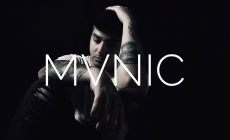
![Travis Scott Releases His First Single of 2019 [VIDEO]](https://www.guttaworld.com/wp-content/uploads/2019/10/Travis-Scott-performs-live-in-2019-230x140.jpg)


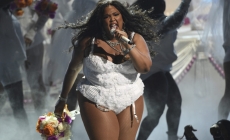
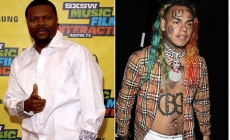
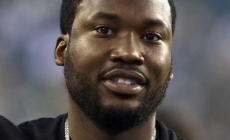






![Travis Scott Releases His First Single of 2019 [VIDEO]](https://www.guttaworld.com/wp-content/uploads/2019/10/Travis-Scott-performs-live-in-2019-80x80.jpg)




